Earth Day
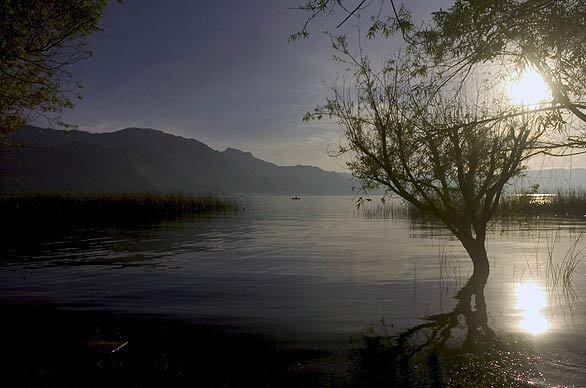
On

Kashmiri schoolchildren shout slogans against the use of polyethylene bags during an
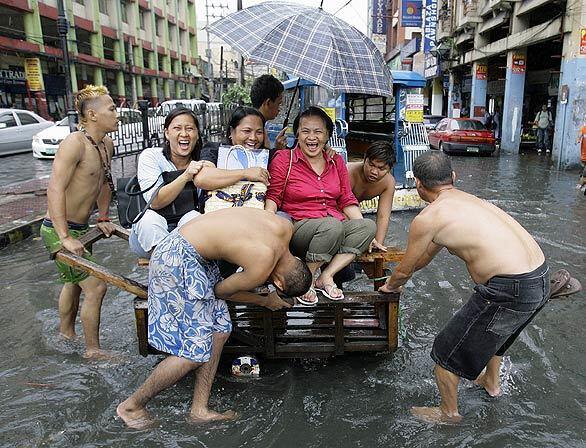
Filipino women enjoy a ride on a cart that keeps them above the floodwaters in Manila, Philippines. Trash-clogged drainage pipes in the city contribute to flooding. (Aaron Favila / Associated Press)
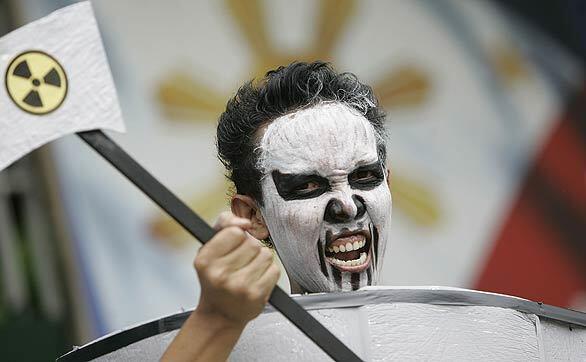
An activist holding a nuclear-power sign shouts slogans outside the Department of Environment and Natural Resources headquarters in suburban Quezon City, Philippines. Environmental activists commemorated
Advertisement
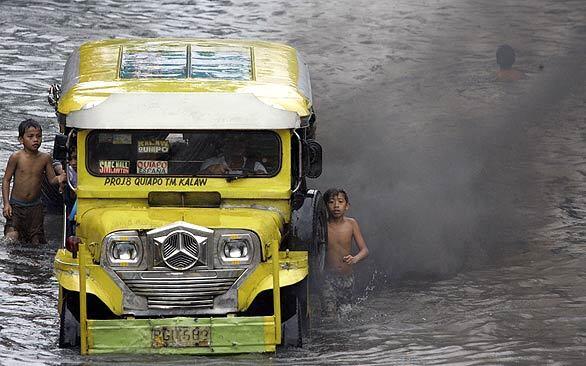
A smoke-belching vehicle negotiates a flooded street in Manila. (Aaron Favila / Associated Press)
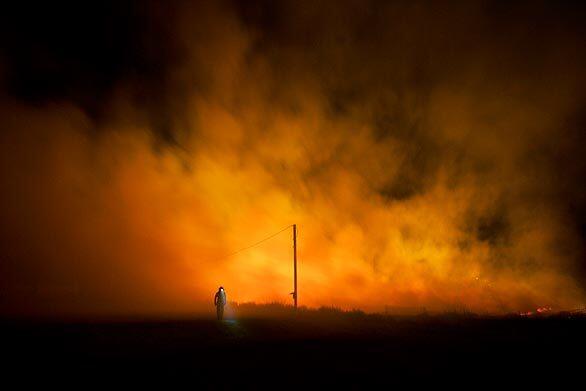
In parts of San Diego County that burned in both 2003 and 2007, scientists worry that native coastal sage and chaparral may be replaced by invasive grasses, destroying wildlife habitat and setting the stage for more frequent fires. Here, a Chula Vista city firefighter battling the Harris Fire in October 2007 walks off a fire line, his headlamp illuminating the way. (Brian Vander Brug / Los Angeles Times)
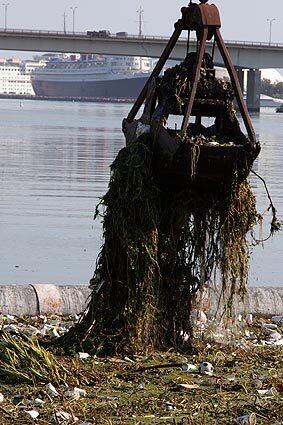
Anti-pollution efforts can be as simple as disposing of trash properly -- or as complicated as calling in a crane. During the dry summer months, debris -- some of it natural, some of it not -- piles up along the bed of the Los Angeles River. When a good rain finally arrives, the debris is washed toward the ocean, in what officials call the season’s “first flush.” To keep that debris from washing out to sea, authorities stretch a “trash boom” across the river’s mouth, near the Queen Mary in Long Beach, and then scoop it up with giant claws. (Bryan Chan / Los Angeles Times)
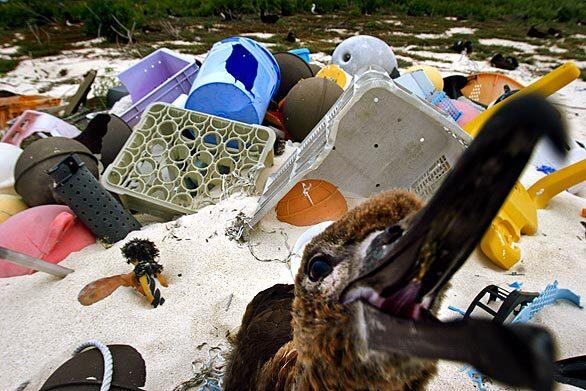
A juvenile albatross sits amid piles of discarded trash that floated ashore including bottles, fishing floats and even televisons in otherwise pristine Midway Atoll. Chicks are often inadvertantly fed plasitic bits which contributes to the death of as many as 200,000 chicks about 40% of the total on this island - before they get a chance to take flight. Many of them succumb to dehydration, the plastic taking up too much room in their stomachs for proper nourishment. More than 2 million birds nest on Midway Atolls cluster of islands every year, including 1.1 million laysan albatross and black-footed albatross. (Rick Loomis / Los Angeles Times)
Advertisement
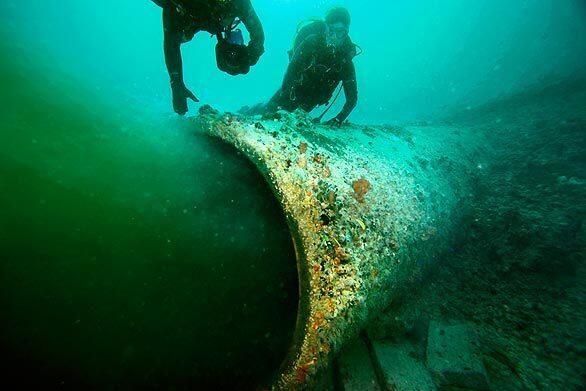
Brian LaPointe, a marine scientist with Harbor Branch Oceanographic Institution in Fort Pierce, Fla., and research assistant Rex “Chip” Baumberger descend to 80 feet to sample the partially treated sewage flowing from
Back to beginning (Rick Loomis / Los Angeles Times)







